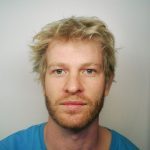Link to Pubmed [PMID] – 25375547
Phys Rev E Stat Nonlin Soft Matter Phys 2014 Oct;90(4):042805
Empirical temporal networks display strong heterogeneities in their dynamics, which profoundly affect processes taking place on these networks, such as rumor and epidemic spreading. Despite the recent wealth of data on temporal networks, little work has been devoted to the understanding of how such heterogeneities can emerge from microscopic mechanisms at the level of nodes and links. Here we show that long-term memory effects are present in the creation and disappearance of links in empirical networks. We thus consider a simple generative modeling framework for temporal networks able to incorporate these memory mechanisms. This allows us to study separately the role of each of these mechanisms in the emergence of heterogeneous network dynamics. In particular, we show analytically and numerically how heterogeneous distributions of contact durations, of intercontact durations, and of numbers of contacts per link emerge. We also study the individual effect of heterogeneities on dynamical processes, such as the paradigmatic susceptible-infected epidemic spreading model. Our results confirm in particular the crucial role of the distributions of intercontact durations and of the numbers of contacts per link.
